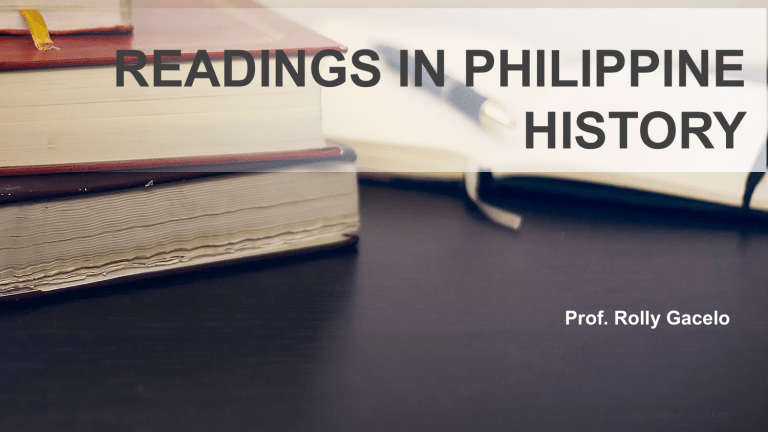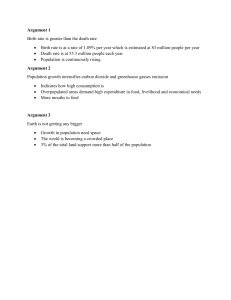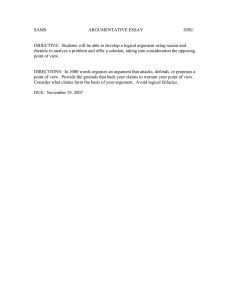
READINGS IN PHILIPPINE HISTORY Prof. Rolly Gacelo ALLPPT.com _ Free PowerPoint Templates, Diagrams and Charts EVALUATION OF PRIMARY & SECONDARY SOURCES AT THE END OF THIS LESSON: • Identify the criteria in evaluating primary and secondary source materials • Assess primary and secondary source materials • evaluate the provenance of primary sources When to consider sources as evidence in historical argument? An Introduction to Historical Methods by Martha C. Howell and Walter Prevenier It must be comprehensible in the most basic level of vocabulary, language, handwriting. Source must be carefully located in accordance with place and time. Author, composer, writer and location where it was piublished must be checked for authenticity. Authenticity must be checked and counterchecked, including details of paper, ink, watermark and others. HISTORIANS MUST BE ABLE TO EVALUATING PRIMARY SOURCES SIXSIX POINTS OFOF INQUIRIES POINTS INQUIRIES 1. Date - When was it produced? 2. Localization - Where did it originate? 3. Authorship - Who wrote it? 4. Analysis - What pre-existing material served as the basis for its production? 5. Integrity - What was its orignal form? 6. Credibility - What is the evidential value of its content? Actual letter of Rizal to his sister Maria detailing his views on the latter's marriage and showing his love for his family while away in Hong Kong. 1. Date 2. Localization 3. Authorship 4. Analysis 5. Integrity 6. Credibility EVALUATING SECONDARY SOURCES Louis Gottschalk said secondary sources must only be used for 1. deriving the setting wherein the contemporary evidence will fit in the grand narrative 2. getting leads to other biographic data Louis Gottschalk said secondary sources must only be used for 3. acquiring quotations or citations from contemporary or other sources 4. deriving interpretations with a view of testing and improving them but not accepting them as outright truth In the Philippines where there is not enough documentation of oral history, evaluation of sources must be performed more sternly. This applies to both PRIMARY and SECONDARY sources. Secondary sources can fill in the gaps in the absence of primary sources. They can: • improve background knowledge • detect inconsistencies and errors Evaluation based on seven (7) internal criteria/factors 1. 2. 3. 4. 5. 6. 7. The The The The The The The genealogy of the document genesis of the document originality of the document interpretation of the document authorial authority of the document competence of the observer trustworthiness of the observer How to assess reliability of each type of primary source? 1. PRIMARY: Assess how they are directly related and closely related to the time of the events they pertain in. “Your advice for me to stay in Madrid and write from there is very kind of you, but I cannot even accept it. Life is difficult in Madrid. All of us there are but “vox clamantis in deserto”.* My relatives preferred seeing me and I feel the same way. In no place is life as nice as the one in my country, with my family right by my side. I’m still not Europeanized, as Filipinos say in Madrid. I always want to return to my native country. As they say, “the goat always goes to the ” mountain”.**) Rizal wrote to Blumentrit on his 26th b-day and talked about his love for family and Filipino roots. Take away from the letter • Confirms his close relationship with Blumentrit. • Attested to Rizal's love for country and family. • He'd rather stay in Europe to continue the Propaganda movement How to assess reliability of each type of primary source? 2. SECONDARY: Assess based on the elapsed time from the date of the event to the date of their creation. This is because as time passes, more materials are likely to be available to come up with extensive outputs. 1942 (By Winston Groom) revisits the strategies, battles, and fateful decision-making that defined the turning point of the war. Crisis in the Philippines: The Marcos Era and Beyond by John Bresnan provides an overview of the history of the Philippines from the period of Spanish colonial domination to the present and analyzes the twenty-year Marcos record and the causes of the downfall of the Marcos regime. EXAMINING AN AUTHOR'S ARGUMENT When you analyze an argument, you break it down into each part and examine them by themselves and in relation to the other parts of the argument. An argument needs to include evidence in support of the writer’s claim or position. 3 major ways that authors present an argument: • Reasoning - the author presents a logical explanation of the argument. • Evidence - the author presents statistics, facts, and studies to prove his point. • Appeal - the author appeals to the reader's emotions to elicit empathy. EXAMINING AN AUTHOR'S ARGUMENT As good critical readers, it is important to consider the motives and qualifications of authors . Authors typically attempt to convince the reader that their point of view is the correct one. When examining a text, the reader should check to see if: 1) facts are provided. 2) the facts provided have been selectively picked from a broader set of data or factual information and limited to only those that support the author's opinion or bias. 3) the facts presented explore perspectives other than the author's and examine different positions and sides that can be taken in relation to the issue or argument. 4) the supporting facts pertain to the point being made and prove or support the author's opinions, arguments, or conclusions. THANKS!





